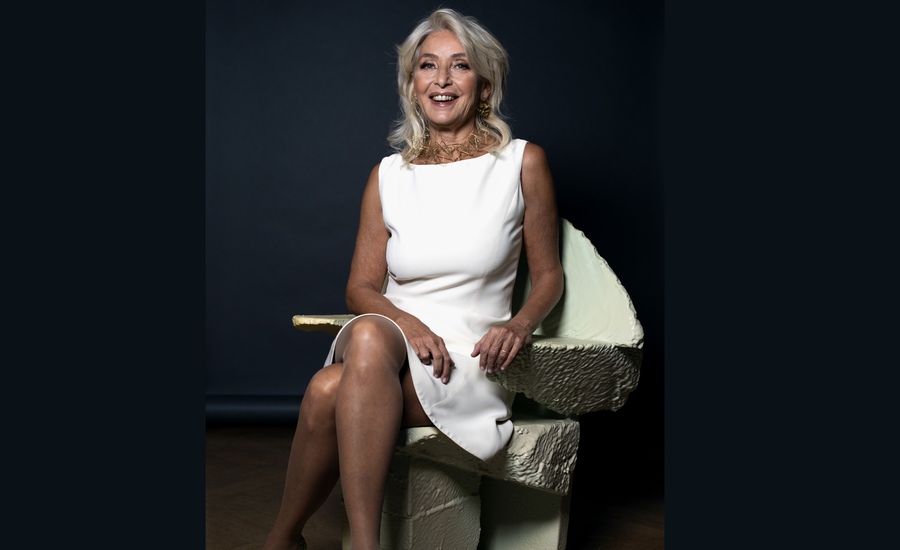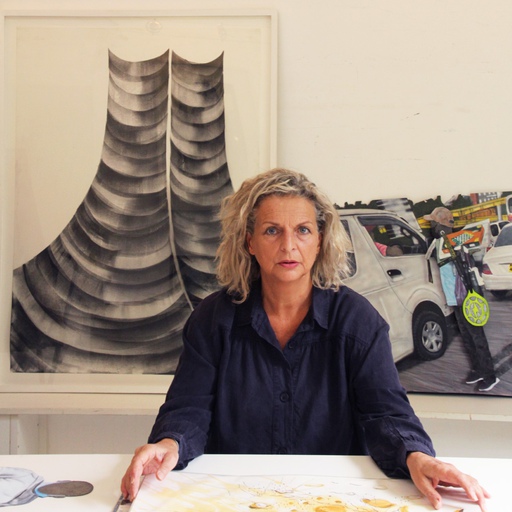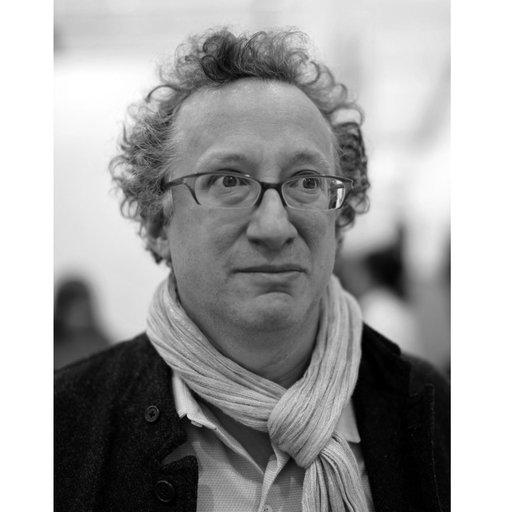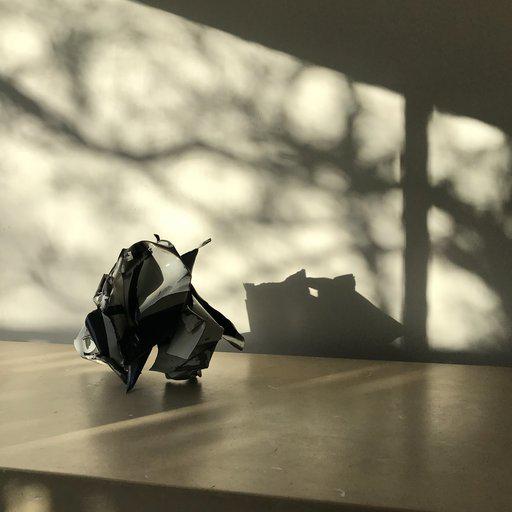The Italian-born arts patron Nicoletta Fiorucci has the kind of collection most institutions relish. Her taste runs from the Renaissance to the finer things you may have seen at Frieze. However, no gallery goer is ever likely to see Fiorucci’s collection in full. In this interview she likens a complete display of her collection to almost being naked. Besides, as she puts it, “I’m not a museum, I’m a person.”
Even in an institutional setting, she remains an individual. Her Nicoletta Fiorucci Foundation , previously named Fiorucci Art Trust, has worked with prestigious art organisations such as the Serpentine Galleries, supporting projects such as Alexandra Daisy Ginsberg’s Pollinator Pathmaker (2022), a living environment made of plants designed to prioritise the needs of endangered pollinating insects.
The foundation operates from a residential address in Chelsea, West London and across her houses and outdoor spaces in Monaco, South of France (Grasse), South of Italy (Li Galli Island), and Greece. It operates almost salon-like – with its emphasis on workshops, residencies and other sublime, evanescent collaborative projects built around fostering artists and designers to live their best lives and create their most vibrant work.
For Fiorucci, working with domestic spaces and unconventional media is paramount as it allows for an intimate and personal experience with art. Domestic spaces, such as her own foundation in West London, create a more relaxed and informal atmosphere that is conducive to fostering creativity, collaboration and artistic experimentation without the pressure of commercial success or institutional approval.
Her passions are equally distinct. Raised in Rome, Fiorucci, known for promoting experimentation and innovation in art, describes how ancient works and antiquities, as well as the Great Masters, and ecclesiastical art was her first love. She cites Warhol as a link between the old and the new; and she confesses how, initially, she found contemporary art shocking and sometimes too blunt for her own Grand Tour-inspired aesthetic palette.
Nevertheless, she has persevered. She describes how the still-life painter Giorgio Morandi opened her eyes to the beauty of the modernist period; why those who appreciate earlier periods really should seek out different qualities in contemporary works; how her own aesthetic desires sometimes have limited her powers as a collector; and how, in order to truly engage with today’s art, you need to ‘spend yourself’ rather than spend your money. In 2023 she received the prestigious 2023 Visionary Award from the Swiss Institute in New York City "for her commitment to art and artists, championing of unconventional approaches and fostering communities".
There are a great many more practical tips in this interview too, such as which works are best suited to the bathroom, as well as how best to pass on works, and why, in order to collect well, you need to stay grounded, (crystals help) and perhaps even meditate.

Recent Acquisitions and Eternal Loves, Part I, Nicoletta Fiorucci Collection, Curated in conversation with Giulia Civardi, at La Rose De Fran ce, Monte - Carlo, 2023. Photography Nicola Gnesi
The art on the walls of her childhood home Before I was 12 there was nothing, my parents lived in a very simple house with no art on the walls. I remember a reproduction of a Giorgone, La Tempesta, and a portrait of David by Picasso. We used to go to churches as my parents were religious. Living in Rome, the churches were full of ancient art. So even though I didn’t have the exposure at home, I had the experience of art from going to church – the same experience that Andy Warhol had. He lived in a poor town and was taken to church where he saw the icons. And later, he obviously developed the idea of the icon in his art.
Eventually we moved to a bigger house after my grandfather, who lived with us, passed away. My father bought a large villa with a garden on an archaeological site. He started to decorate it with archaeological pieces and paintings which represented the contours of the region – quite local taste. For my father it was all about creating a relationship between the house in which we lived and the surrounding area where, if you dig into the ground, you can find marble, coins and all sorts of things. So, the presence of archaeology was very important and quite exciting.
My father lost his mother when he was a child and I think he was looking for comfort – for something powerful that would soothe his soul. He used to say, ‘in art there is life’. I think he was looking for something, surrounding himself with works that he loved and that gave him a sense of home. And when he was decorating the house – buying and placing objects – I started to fall in love with the kinds of art I was seeing at the auctions.
The first art that made an impression As a child, I was more impressed by architecture, landscape and bridges rather than by painting or sculpture. But when I started studying the history of art properly, every lesson became a love affair. I’m more into the Venetian style than the Florentine side because I like color and prefer it to line. ‘Grand Tour’ art for me was more accessible because it was my first contemporary feeling. It was ‘experiencing’ not ‘commissioning’. It wasn’t so much religious, more the private experience of a person wanting to learn more about the past.
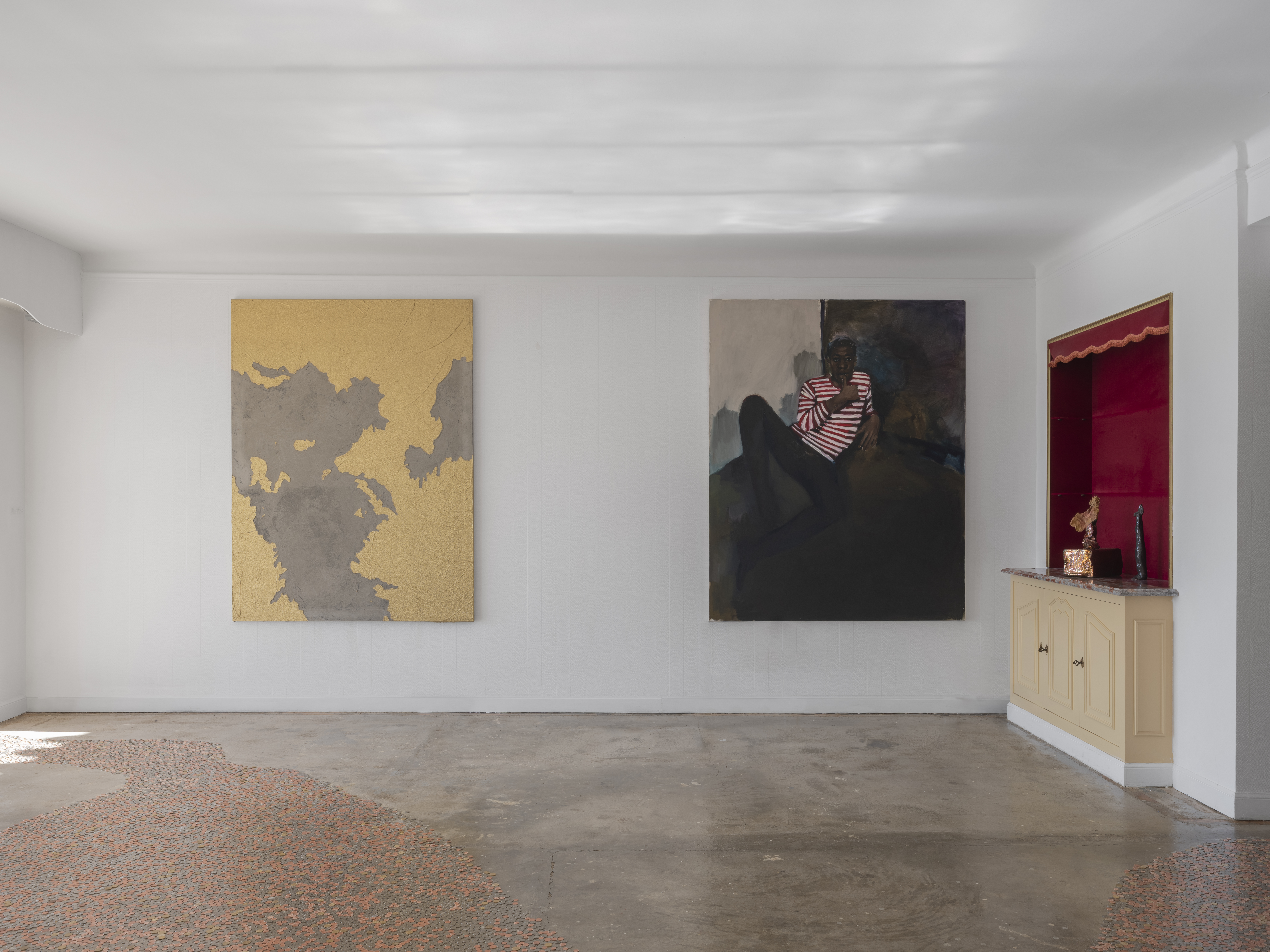 Recent Acquisitions and Eternal Loves, Part I, Nicoletta Fiorucci Collection, Curated in
conversation with Giulia Civardi, at La Rose De Fran
ce, Monte
-
Carlo, 2023. Photography Nicola Gnesi
Recent Acquisitions and Eternal Loves, Part I, Nicoletta Fiorucci Collection, Curated in
conversation with Giulia Civardi, at La Rose De Fran
ce, Monte
-
Carlo, 2023. Photography Nicola Gnesi
The first piece of art she owned When I was young, I collected these amazing posters from museums in Trento and Siena that I framed and hung in the house. For me it was very exciting to be surrounded by these images, even though they were posters. I remember seeing a tiny Dutch School oil on wood landscape painting and I fell in love with it. As I went to sleep in the evening, my father interested in cultivating my passion for art, went to the auction and bid on it for me. The next day when I woke up, I found the little painting on a chair in my room. So, that was my first piece. Later, when I began to fall in love with old master drawings, I started studying history of art in the studio of the famous Italian art historian Giuliano Briganti, whose students include writer Laura Laviati.
The first museum visit or show that blew her mind My father used to take me to Florence and Venice. I remember when I saw Florence for the first time at ten years old, I was so impressed, even enchanted. At the same time, I have a strong memory of when my father brought me to New York City at the age of 15. I remember getting upset and thinking, this is such an ugly city, a monstrosity! As I toured the city, I thought about my first visit to Florence and the difference between the Tuscan capital and New York. Even at a young age I was already connecting strongly with an Italian Renaissance aesthetic.
The moment she understood contemporary art It took me so much time to understand contemporary art. At first, I constantly refused it and at the same time I was meeting many contemporary Italian artists, introduced to me by Briganti’s wife Luisa Laureati, who had a contemporary art gallery that I used to visit.
 Recent Acquisitions and Eternal Loves, Part I, Nicoletta Fiorucci Collection, Curated in
conversation with Giulia Civardi, at La Rose De Fran
ce, Monte
-
Carlo, 2023. Photography Nicola Gnesi
Recent Acquisitions and Eternal Loves, Part I, Nicoletta Fiorucci Collection, Curated in
conversation with Giulia Civardi, at La Rose De Fran
ce, Monte
-
Carlo, 2023. Photography Nicola Gnesi
There, I met Eliseo Mattiacci, Jannis Kounellis, Giulio Paolini, Aldo Parmigiani, Salvo, Luigi Ontani, and Carla Accardi, among others. I remember seeing Kounellis exhibit his installation of hooks with the dirty jackets hanging, but I struggled to understand his work. As I was studying Nicolas Poussin and Piero della Francesca, this beautiful real life was all around me with these kinds of artists, but still, I could not really connect with contemporary art.
I was told one day that one should not look at contemporary expression in the same way one is taught to look at a master because the quality is expressed in a completely different way. Slowly I became concerned because I felt that I was limiting myself. Laura Laviati was telling me I should connect with the art that was around me, and that expressed the time that we are all living in. She was helping me, but I was very resistant.
But then I met Eliseo Mattiaci and Marco Gastini and my heart opened a little. Their art was a little easier, more elegant. And then slowly with Fausto Melotti, and then Giulio Paolini as well, because Paolini is a bit like a classical artist – the meaning of Paolini is very contemporary and radical. So, through the aesthetic elements of the work I was able to connect to the concept, whereas if the aesthetic was too aggressive; for instance, Damien Hirst’s The Physical Impossibility of Death in the Mind of Someone Living (1991), I could not connect with it. For me, when the exhibition Sensation (18 September – 28 December 1997) with Damien Hirst and Tracey Emin, among other members of the Young British Artists (YBAs), arrived at the Royal Academy of Arts in London, it was too much. I wanted to protect my aesthetic world – this is what happens to a person who lives in Rome, Florence and Umbria! 
Giorgio Morandi Paesaggio , 1958 Watercolor
The first piece she bought I bought two small Giorgio Morandi watercolors and owning them made me very proud. The paintings were very expensive for me, so I asked my parents to buy them for my birthday. Morandi was my first modern love. It was not difficult to connect with him – I felt I was perceiving his soul through these meditative works. I loved the intimacy achieved through domestic scale.
The best piece of collecting advice she ever received Giuliano once told me that I had to see as many paintings of frescos as possible to nourish my imagination and memory. He said you have a library in your mind and in order to care for this library you must see as much as you can – to memorise and observe.
After seeing an exhibition, Giuliano would ask which three works we would like to have for our collection and why. It was, of course, a fantasy exercise, but it was very helpful. He was basically asking why I liked a work, encouraging me to dream. The reasons for the works I chose was that there was an elegance I didn’t find in other work, or because it is breath-taking and that was an emotion I wanted to experience.
I was privileged to be able to travel and live my studies in the Netherlands. I visited museums and went to Delft and Leiden, as well as four or five little villages around Amsterdam. Then I met Nino Castagnoli who at the time was a director of a gallery in Torino. We talked about what it means to create a collection and I asked for his advice and told him that I felt ready to open my mind and heart to something.
Castagnoli told me that to have a collection you don’t need money – you need time and commitment. You must spend ‘yourself’. Having a lot of money does not make a collection – it is just a series of acquisitions. A collection is an expression or a memory of a collector’s path over time, the mistakes you make don’t matter. It is the record of a journey.
When you buy old masters, you need to study because attribution is very important. Your perspective, however, must change when collecting contemporary art. Cassenoli told me if you want to commit you cannot study, you must live – you need to ‘spend yourself’ in terms of time. You want and need life, experience and encounters.
It was the best advice and that was why the foundation was born – I needed to experience more with artists. When I met Milovan Farronato, he suggested I create some events in order to be able to meet artists and see the creative process unveiling. And I knew then that, yes, this is the way to collect! The foundation is a giving project.

Latifa Echakhch, A chaque stencil une révolution , 2007, carbon paper A4, glue, methylated alcohol four walls Latifa Echakhch, Speakers Corner , installation view, Tate Modern, London, 2008 courtesy of the artist and Tate Modern and Kaufmann Repetto Milan / New York Photo: Tate Modern
The artwork everyone always comments on I have different houses with installations that change every two or so years. It’s difficult to say which one because it’s changing all the time. What I like to install is Latifa Echakhch’s For Each Stencil A Revolution (2007) which I saw at Tate Modern many years ago. The walls of a room are lined with numerous sheets of carbon paper that changes color using alcohol and ink that melts down into a deep purple, dark pink and blue. Even the floor becomes blue from the ink drips. It is a big installation that I’ve shown at my house in Rome and London and when installed everyone is enchanted – me too, I find it amazing!

Peter Doig, Untitled , 2010 Watercolor on paper, 25 x 35 cm Courtesy of the artist and Michael Werner Gallery
The art in her bathroom Every bathroom is full of art! The artworks I have in the bathroom tend to be fragile, they cannot be exposed to light. Peter Doig is in there along with Ettore Sottsass and many others. The Morandi watercolors too are in the bathroom.
The thing that's not art but is to her Lots of crystals. I love crystals because of their energy and their power to root us. When you live in a city the opportunities to be close to nature are rare. I bring crystals into the home to connect with nature because something from under the earth helps me feel rooted. There are crystals for third eye imagination, clearing the mind for inspiration, and to be compassionate. I have them all around me, placed here and there - selenite in the bedroom and amber in the dining room.
What people might deduce about her from her collection I hope they are not able to form an opinion. This is why I never show all the pieces of the collection together, because I don’t want to be naked in public. It’s an exercise of freedom and expression. When I collect, I don’t want to think along the lines of ‘because I have a bronze, now I need a wood piece’. I’m not a museum, I’m a person. I buy what I feel, what I like. If there is something missing, I don’t care. I don’t pretend to create a taste or decide which artist is more important than another - that is not my goal. My goal is to be surrounded by aesthetic works.
The pieces she'd like to buy I have this aesthetic, Grand Tour, imprint but I’m evolving. Now I want something more contemporary and more challenging. I am drawn to artists who have unconventional ways of working with media, who are pushing the boundaries of what is possible with art.
I believe my growth happens when I continue to go beyond my limits. If you want to expect magic, you must take risks. But take risks when you are grounded and centered. One needs to meditate, to take stock and to get grounded and then it’s time for the next challenge. In this position you can find yourself and be stronger and leave the comfort zone. As the shaman says, when you leave your comfort zone the magic happens!
The piece that reflects where she is now The piece I bought last autumn at Frieze – You touch one you touch them all is the title of the work by Chilean artist Patricia Dominguez. It features a pair of hands letting go of – to my mind, liberating – a bunch of leaves. My first collection as a child was all about leaves. I was enchanted by their different colors and shapes. I took it very seriously. So, there is a kind of link. Dominguez had a residency at CERN and was part of a show called Rooted Beings at the Wellcome Collection. Her work discusses quantum entanglement theory – the idea that we are all connected. The artist also has an experimental platform for ethnobotanical research where she expands on her mindful and spiritual animist way of thinking. There is a quantum physics way of representing our relationship with nature in Dominguez’s practice. 
Patricia Domínguez - Tocas a una, tocas a todas (You touch one, you touch them all) , 2022 Watercolor and gemstones on paper, 56 x 56 cm Recent Acquisitions and Eternal Loves, Part I, Nicoletta Fiorucci C ollection, Curated in conversation with Giulia Civardi, at La Rose De France, Monte - Carlo, 2023. Photography Nicola Gnesi
The piece she'll leave to someone special I would like to leave to the children of the artists the work of their parents that I bought before they were born. I became friends with many of the artists I collect before they had children, so I had the chance to see the children growing and arriving – Camille Henrot especially. She has two boys and one of them is named Iddu. She met her husband at my place in Stromboli, so they named their child Iddu because the volcano brought them together. So maybe one day I will leave the works of Camille to her children and do the same with other artists. I think I will bequeath to them in order to give back to the artists.
What's now and next for Nicola We recently opened Recent Acquisition and Eternal Loves – Part I in Monaco (January – April 2023), created in conversation with the Collection’s Curator, Giulia Civardi. The intimate, domestic presentation has over 90 works by 59 international artists that radically shaped me and is the largest showing of the collection to date. Throughout the exhibition, works were swapped with other pieces, reflecting the idea of a "living" collection that is more flexible and less institutionally-strict. It allows for a more dynamic and fluid approach to collecting and exhibiting art.
There are several unconventional forthcoming projects such as the foundation’s support of Sissel Tolaas’s scent research and production of a perfume edition in her project for Pompeii Commitment. Archaeological Matters, a contemporary art programme established by the Archaeological Park of Pompeii and the Italian Ministry of Culture. In this work, smell is not just an artistic medium but also an element to think about what makes a human reconnect with ancestral instinct and knowledge – for there is still a lot to discover in ‘man’s’ atavistic abilities. Other projects include our commission of Ignota’s memory garden (2022 – 2024) in Grasse, France, which will be part of the collection. By embracing a wide range of materials and techniques, such as scent, I hope to challenge traditional notions of what art can be and to encourage artists to push the boundaries of their own practices.

Alexandra Daisy Ginsberg - Pollinator Pathmaker , Serpentine Edition Garden , 2022. Back to Earth exhibition a t Serpentine North (22 June – 18 September). Installation view. © readsreads.info. Courtesy Serpentine.











